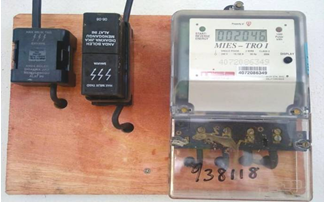The Sun Daily
29 June 2021
Economists offer different takes on Malaysia’s growth path

Pemulih includes direct cash handouts, wage subsidies, loan moratorium and electricity bill discounts. – BERNAMAPIX
PETALING JAYA: The extension of phase one of the National Recovery Plan and the accompanying RM150 billion Pemulih stimulus package have elicited mixed views from economists on the impact on Malaysia’s economic growth.
However, they agreed that the package, which includes direct cash handouts, wage subsidies, loan moratorium and electricity bill discounts, should help Malaysians through another tough spell.
United Overseas Bank (Malaysia) maintains its 2021 gross domestic product (GDP) growth estimate of 4% and expects Bank Negara Malaysia to keep the policy rate unchanged at 1.75% on July 8.
“The sizeable amount of spending will help to cushion somewhat the effects of the ongoing lockdown with measures taking effect from July until December, which coincides with the four phases of the National Recovery Plan over the next six months,” it said in a report.
“However, given the fluid condition and pandemic uncertainties, downside risks prevail, especially if there are delays in the vaccination rollout and threat from new Covid-19 variants,” it added.
OCBC Bank (Malaysia) said the one month’s lockdown would have shaved the GDP growth rate by two full percentage points, to a range of 4.0-5.5%.
“We had downgraded our growth forecast to 4.0% just as the country was stepping into lockdown mode.
“Given the continued manifestation of downside risks coming from Covid-19 resurgence and related lockdown measures, we see a heightened chance of the central bank having to step in with a rate cut at its Monetary Policy Committee meeting on July 8,” it said in a statement.
It added that the reluctance to push the direct fiscal boundary too much could be due to a number of factors. For one, at 58.5% of GDP, the debt-to-GDP ratio for Malaysia is already quite close to the statutory limit of 60%. Elsewhere, the potential action by major rating agencies could form another limiting factor for the government’s fiscal appetite.
Although the fiscal stimulus measures should help to cushion the blow, they would burden monetary policy, it said.
Maybank Investment Bank said the RM10 billion direct fiscal injection in Pemulih happens to be the same as the amount left from the RM65 billion Covid-19 fund after the RM38 billion spent in 2020 and the RM17 billion allocated under Budget 2021.
“There is no change in our 2021 real GDP forecast of 4.2% (revised from 5.1% previously) for now as longer lockdown is offset with larger stimulus,” said its chief economist, Suhaimi Ilias.
Pemulih covers three focus areas – support for people’s welfare, helping businesses, and accelerating vaccination. Key measures in value terms include a new EPF withdrawal scheme worth RM30 billion, RM20 billion guarantee under Syarikat Jaminan Pembiayaan Perniagaan Bhd, cash aid of RM4.6 billion, wage subsidy scheme of RM3.8 billion, and RM1 billion to expedite the vaccination rollout. A six-month loan moratorium will also be offered on an opt-in basis with automatic approval.
This brings cumulative assistance since 2020 to RM530 billion that was announced over eight fiscal packages (including RM40 billion announced in late May).
The direct fiscal injection from Pemulih is RM10 billion which covers mainly cash aid, wage subsidies, grants, healthcare and vaccination spending.
Web source: https://www.thesundaily.my/business/economists-offer-different-takes-on-malaysia-s-growth-path-EF8016530




